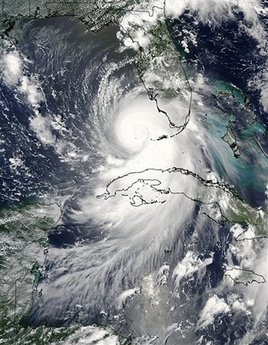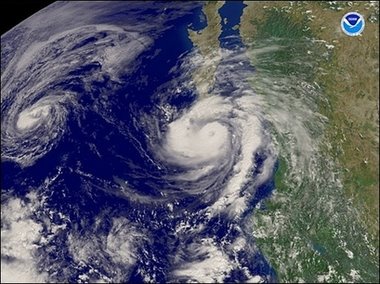Saturday, September 30, 2006
Friday, September 29, 2006
Journal: Agency blocked hurricane report
Tuesday, September 26, 2006
Scientists issue strongest coral warning

This 2006 handout file photo, provided by the U.S. Geological Survey, shows a bleached elkhorn coral near St. Croix, U.S. Virgin Islands. Scientists have issued their strongest warning so far this year that unusually warm Caribbean Sea temperatures threaten coral reefs that suffered widespread damage last year in record-setting heat. (AP Photo/U.S. Geological Survey, file)
Monday, September 25, 2006
Global temperature highest in millennia
Wednesday, September 20, 2006
Exxon Mobil accused of misleading public
Tuesday, September 19, 2006
Saturday, September 16, 2006
Wednesday, September 13, 2006
Arctic ice melting rapidly, study says

This satellite image released by NASA shows the concentration of Arctic sea ice in 2005....
Arctic sea ice in winter is melting far faster than before, two new
Scientists point to the sudden and rapid melting as a sure sign of man-made global warming.
Tuesday, September 12, 2006
Report links global warming, storms
Note from Chris on this post. If you look back in the archives of this blog you will see it was one of the first sources on the internet to make the connection between hurricanes and climate change.



